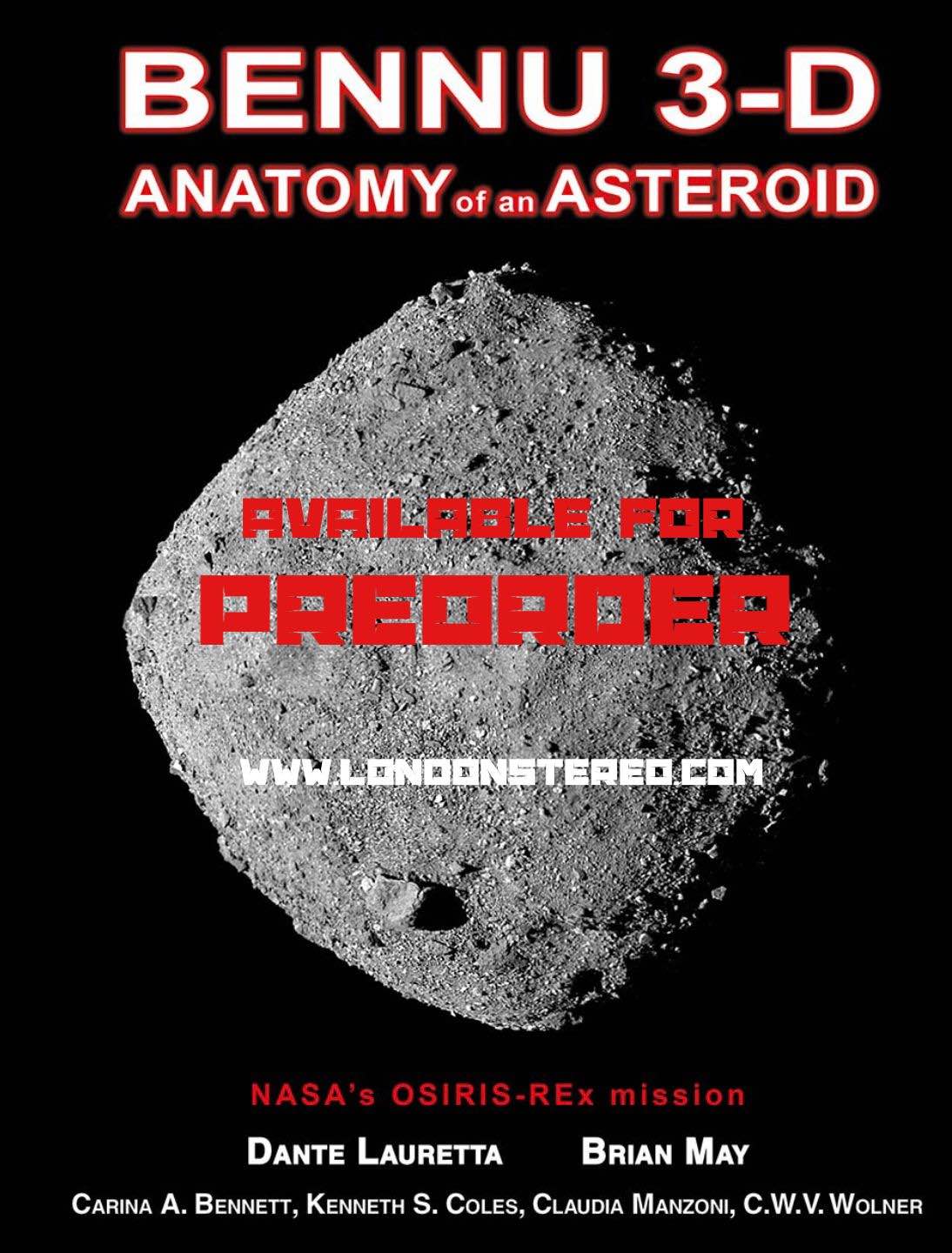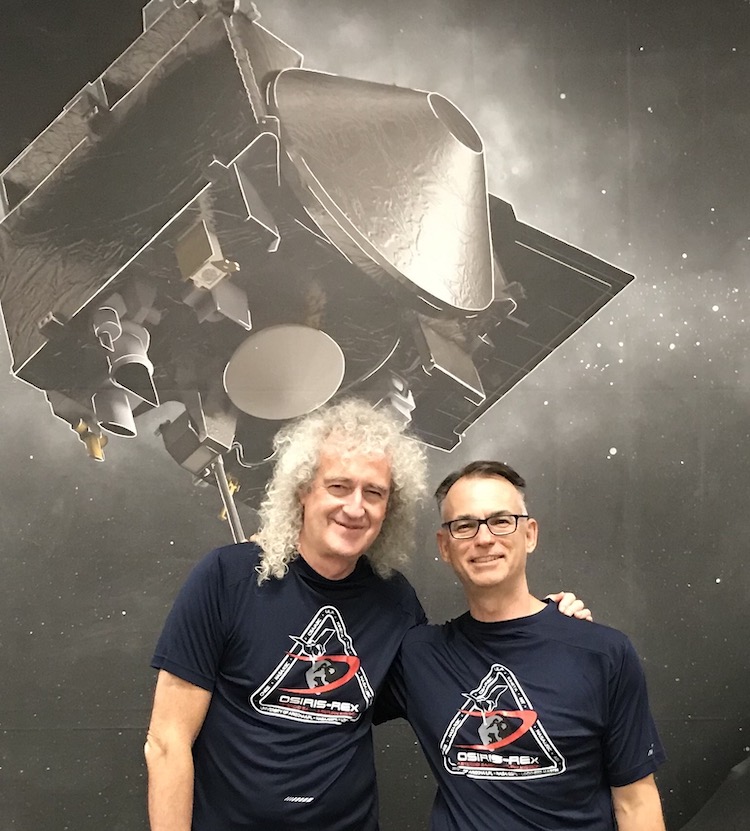
'Bennu 3-D: Anatomy of an Asteroid' - Pre-order and Event Details
Brian's next highly anticipated book - Bennu 3-D: Anatomy of an Asteroid - is coming very soon! To launch the title he and @londonstereo are collaborating with one of the UK's most magnificent institutions, the Natural History Museum...AND you are all invited to join a virtual talk hosted by the Museum on 31st July, 18.30-21.00.
Sir Brian May and co-author, Professor Dante Lauretta, along with Professor Sara Russell of the Natural History Museum, will take you on a spectacular stereoscopic 3-D journey of the hazardous asteroid.
If you're interested you can book your online ticket here.
In the meantime, Bennu 3-D, from today, is available for PREORDER here.
All about the book:
A THRILLING, FIRST EVER, STEREOSCOPIC (3-D) EXPLORATION OF THE MOST HAZARDOUS ASTEROID - BENNU.
A collaboration between Sir Brian May and University of Arizona Professor Dante Lauretta, leader of the [NASA] OSIRIS-REx mission.
The world's first complete (and stereoscopic) atlas of an asteroid. The subject explored - Bennu - poses more threat to Earth than any other asteroid.
Contains previously unseen stereoscopic (3-D) images of Bennu that provided vital information for the current OSIRIS-REx mission.
Presents the entire history of the asteroid from formation over 4.5 billion years ago, right the way through to today’s mission.
Analysis of what it reveals about the origin of life.
Insightful predictions from the authors on the [asteroid’s] sample materials to be returned to Earth in September 2023.
Brian May says:
"It’s only recently we have begun to understand the enormous significance of asteroids in the fortunes of Planet Earth. It’s long been recognised that some of them have the power to destroy our planet by collision. But it’s now becoming evident that previous asteroid (and cometary) impacts supplied ALL the material from which our entire Biosphere is made - and as such are responsible for our very existence. This, together with the possible benefits to humanity from mining asteroids for minerals, gives us three vital reasons for making close studies of near-Earth asteroids. The OSIRIS-REx mission undertook by far the most intimate exploration of any asteroid to date, and here are the results, the fruits of the labours of a huge team of top scientists and engineers. Our aim has been to deliver this extraordinary portrait in a form which is understandable and enjoyable to scientists and non-scientists alike."
"At 7:05 p.m. on September 8, 2016, a cloudless Florida evening, NASA launched its first asteroid sample return mission, the Origins, Spectral Interpretation, Resource Identification, and Security–Regolith Explorer — better known as OSIRIS-REx. The spacecraft shot into space aboard a United Launch Alliance Atlas V 411 rocket, initiating its seven-year expedition to rendezvous with asteroid Bennu in 2018, collect a sample in 2020, and bring it back to Earth in 2023.” Extract from Bennu 3-D.
Bennu, named for the ancient Egyptian phoenix, was the chosen destination of OSIRIS-REx, NASA's premier mission of asteroid exploration, launched in 2016. The study of the asteroid is crucial in safeguarding the future of planet Earth as it is believed to pose a great threat to Earth in approximately 160 years. Bennu is also a time capsule from the dawn of our Solar System, holding secrets over four-and-a-half billion years old about the origin of life and Earth as a habitable planet. The story behind Bennu is powerfully explored in narrative and beautiful visuals in this fascinating new publication.
In 2020 the OSIRIS-REx spacecraft successfully landed on the surface of Bennu and collected pristine asteroid material for delivery to Earth in September 2023. In the meantime Brian May along with his colleague Claudia Manzoni set about on another mission meticulously creating stereo images from original images collected by the OSIRIS-REx cameras. These in-depth visuals became a part of the successful effort to find a safe landing site for sampling and feature in the book for the public to see for the first time. The striking stereos come to life in the splendour of 3-D with a viewing device designed by Brian and included with each copy.
For Brian and his colleague, Claudia Manzoni, it was an amazing opportunity to contribute meaningfully to the mission by creating stereoscopic images from the O-REx data. The images you see in Bennu 3-D contributed to the crucial search for a safe landing site, enabling the collection of the material sample to be returned to Earth. And now, in this book, these dramatic insights into an asteroid's anatomy can be enjoyed by all.
The text details the data collected by the mission so far and the authors make exciting predictions on what the forthcoming return samples could reveal. Scientific studies of the samples, along with data collected during the rendezvous, promise to help find answers to some of humanity's deepest questions. The return of samples from Bennu is the culmination of over a decade of intense effort by thousands of people around the world. These samples will be analyzed by hundreds of researchers - including Sara Russell at The Natural History Museum - to unravel the history of our Solar System, the formation of the Earth, and, possibly, the nature of the building blocks of life.

